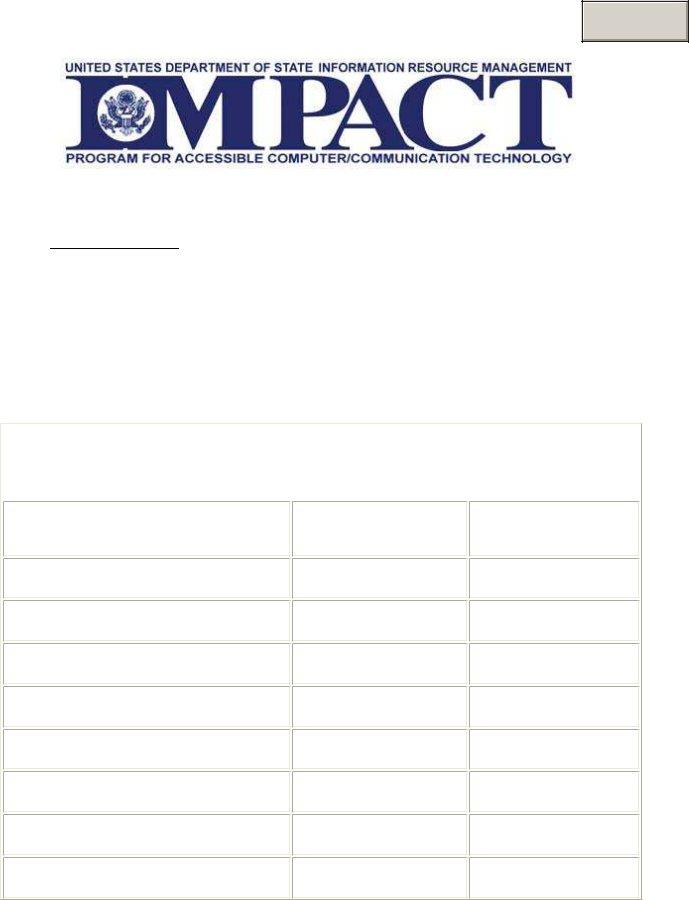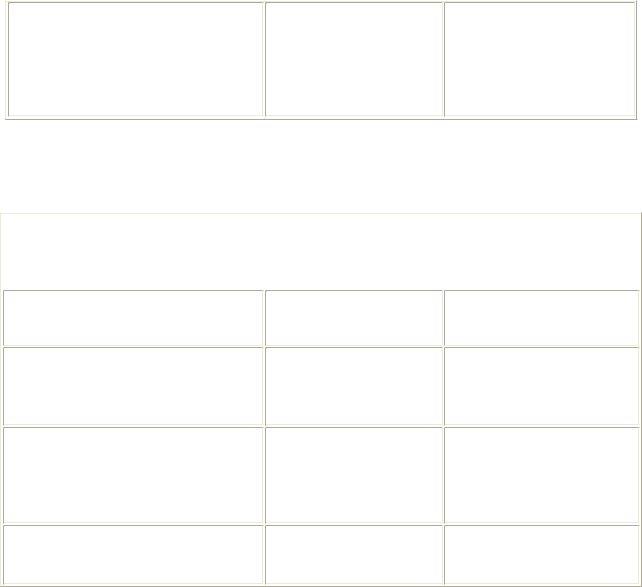In today's digital age, ensuring that products and services are accessible to all users, including those with disabilities, is not just a matter of compliance but a reflection of inclusive design principles. The Voluntary Product Accessibility Template (VPAT), as presented on February 1, 2016, for the Duplo Slitter Cutter Creaser (Product Name: DC-646), is a comprehensive document prepared by Automated Business Systems. The VPAT critically outlines how the DC-646 meets, or fails to meet, the standards set forth under various sections such as software applications and operating systems, web-based internet information and applications, telecommunications products, video and multimedia products, self-contained, closed products, desktop and portable computers, functional performance criteria, and information documentation and support. Endorsed by vendor David Jamison, with a direct line at 214-869-8185 for inquiries, this template serves not only as a transparency tool but also as a guide for potential enhancements in product development. The VPAT delves into specifics, ranging from keyboard executability, non-disruption of accessibility features, on-screen focus indication, and provision of information accessible by assistive technologies, to considerations of color and contrast settings, avoidance of flashing elements, and electronic form accessibility. However, it is noted that many criteria were marked as "Not Applicable" for this product, highlighting the tailored nature of accessibility requirements based on the unique functionalities and user interactions of the DC-646.
| Question | Answer |
|---|---|
| Form Name | Accessibility Template Form |
| Form Length | 17 pages |
| Fillable? | No |
| Fillable fields | 0 |
| Avg. time to fill out | 4 min 15 sec |
| Other names | accessibility template, impact vpat form, template vpat form, downloadable templates get shit done |

Print Form
Voluntary Product Accessibility Template (VPAT)
Date:
Duplo Slitter Cutter Creaser
Product Name: __________________________________________________
Product Version N umber: ___________
Automated Business Systems
Vendor Company Name: ___________________________________________
David Jamison
Vendor Contact Name : ___________________________________________
Vendor Contact Telephone: ________________________________
APPENDIX A: Suggested Language Guide
Summary Table
Voluntary Product Accessibility Template
Criteria
Section 1194.21 Software Applications and
Operating S ystems
Section 1194.22
Section 1194.23 Telecommunications Products
Section 1194.24 Video and Multi- media Products
Section 1194.25
Section 1194.26 Desktop and Portable Computers
Section 1194.31 Functional Performance
Criteria
Section 1194.41 Information,
Documentation and Support
Level of Support &
Supporting Features
Re marks and
explanations
Not Applicable
Not Applicable
Not Applicable
Not Applicable
Supports
Not Applicable
Supports
Supports

Section 1194.21 Software Applications and Operating Systems -
Detail
Voluntary Product Accessibility Template
Criteria
(a) When software is designed to run on a
system that has a keyboard, product functions shall be executable from a keyboard where the function itself or the result of performing a function can be
discerned textually.
(b) Applications shall not disrupt or disable
activated features of other products that are identified as accessibility features, where
those |
features |
are |
developed |
and |
|
documented |
|
according |
|
to |
industry |
standards. |
Applications |
also |
shall |
not |
|
disrupt or disable activated features |
of any |
||||
operating system that are identified as |
|
|
|||
accessibility features where the application programming interface fo r those
accessibility features has been documented
by the manufacturer of the operating system
and is available to the product developer.
(c) A well |
|
|
|
||||||||
the |
current |
focus |
shall |
|
be |
provided |
that |
|
|||
moves |
among |
interactive |
|
interface |
elements |
|
|||||
as |
the |
input |
focus |
changes. |
The |
focus |
shall |
|
|||
be programmatically exposed so that |
|
|
|
|
|
|
|||||
Assistive |
Technology |
can |
track |
focus |
and |
|
|||||
focus changes. |
|
|
|
|
|
|
|
|
|
||
|
|
|
|
|
|
|
|
|
|
|
|
(d) Sufficient information about a user
interface element including the identity, operation and state of the element shall be available to Assistive Technology. When an image represents a program element, the
information |
conveyed |
by |
the |
image |
must |
also be available in text. |
|
|
|
|
|
Level of Support &
Supporting Features
Remarks and
explanations
Not Applicable
Not Applicable
Not Applicable
Not Applicable

(e) When bitmap images are used to
identify controls, status indicators, or other programmatic elements, the meaning
assigned to those images shall be consistent
throughout an application's performance.
(f) Textual information shall be provided
through operating system functions for displaying text. The minimum information that shall be made available is text content,
text input caret location, and text attributes.
(g) Applications shall not override user
selected contrast and color selections and other individual display attributes.
(h) When animation is displayed, |
the |
|
|
|||
information shall |
be |
displayable |
in |
at |
least |
|
one |
mode |
at |
the |
|||
option of the user. |
|
|
|
|
|
|
|
|
|
|
|||
|
|
|
|
|||
(i) Color coding shall not be used as the |
|
|
|
|||
only |
means |
of |
conveying |
information, |
||
indicating an action, prompting a response,
or distinguishing a visual element.
(j) When a product permits a user to adjust
color and contrast settings, a variety of color selections capable of producing a
range of contrast levels shall be provided.
(k) Software shall not use flashing or
blinking text, objects, or other elements having a flash or blink frequency greater than 2 Hz and lower than 55 Hz.
(l)When electronic forms are used, the form shall allow people using Assistive Technology to access the information, field elements, and functionality required for completion and submission of the form, including all directions and cues.
Not Applicable
Not Applicable
Not Applicable
Not Applicable
Not Applicable
Not Applicable
Not Applicable
Not Applicable

Section 1194.22
Applications - Detail
Voluntary Product Accessibility Template
Criteria
(a) A text equivalent for every non |
|
element shall be provided (e.g., |
via |
"alt", "longdesc", or in element |
|
content). |
|
|
|
(b)Equivalent alternatives for any multimedia presentation shall be synchronized with the presentation.
(c)Web pages shall be designed so that
all information conveyed with color is a lso available without color, for
example from context or markup.
(d)Documents shall be organized so they are readable without requiring an associated style sheet.
(e)Redundant text links shall be
provided for each active region of a
(f) Client |
|
|||
provided |
instead |
of |
image |
|
maps except where |
the regions |
cannot |
||
be defined with an available geometric |
|
|||
shape.
(g)Row and column headers shall be identified for data tables.
(h) Markup |
shall be used to associate |
data cells and header cells for data tables that have two or more logical levels of row or column headers.
(i) Frames shall be titled with text that
facilitates frame identification and navigation
Level of Support &
Supporting Features
Remarks and
explanations
Not Applicable
Not Applicable
Not Applicable
Not Applicable
Not Applicable
Not Applicable
Not Applicable
Not Applicable
Not Applicable

(j)Pages shall be designed to avoid causing the screen to flicker with a frequency greater than 2 Hz and lower than 55 Hz.
(k)A text
information |
or |
functionality, |
shall |
be |
|||||
provided |
to make |
a |
web |
site |
comply |
||||
with |
the |
provisions |
of |
this |
part, |
when |
|||
compliance |
cannot |
be |
accomplished |
in |
|||||
any |
other |
way. |
The |
content |
of |
the |
text- |
||
only page shall be updated whenever |
|
|
|
||||||
the primary page changes. |
|
|
|
|
|
||||
|
|
|
|
|
|||||
|
|
|
|
|
|||||
(l) When pages utilize scripting |
|
|
|
||||||
languages |
to |
display |
content, |
or |
to |
||||
create interface elements, the |
|
|
|
|
|||||
information |
provided by the script shall |
|
|||||||
be |
identified |
with |
functional |
text |
that |
||||
can be read by Assistive Technology.
(m) When a web page requires that an
applet,
link to a
(n) When electronic forms are designed
to be completed
Technology |
to |
access |
the |
information, |
field elements, and functionality |
|
|||
required for completion and submission
of the form, including all directions and
cues.
(o)A method shall be provided that permits users to skip repetitive navigation links.
(p)When a timed response is required,
the user shall be alerted and given sufficient time to indicate more time is
required.
Not Applicable
Not Applicable
Not Applicable
Not Applicable
Not Applicable
Not Applicable
Not Applicable

Section 1194.23 Telecommunications Products - Detail
Voluntary Product Accessibility Template
Criteria
(a) Telecommunications products or
systems which provide a function allowing voice communication and which do not themselves provide a TTY functionality shall provide a standard
point for TTYs. Microphones shall be capable of being turned on and off to allow the user to intermix speech with
TTY use.
(b) Telecommunications products
whic h include voice communication functionality shall support all
commonly used
protocols.
(c) Voice mail, auto |
|
|
||||
interactive |
|
voice |
response |
|
||
telecommunications |
systems |
shall |
be |
|
||
usable by TTY users with their TTYs. |
|
|
|
|||
|
|
|
|
|||
|
|
|
|
|||
(d) Voice mail, messaging, auto |
- |
|
|
|||
attendant, |
and |
interactive |
voice |
|||
response |
telecommunications |
systems |
||||
that require a response from a user |
|
|
|
|||
within |
a |
time |
interval, shall |
give |
an |
|
alert |
when |
the time interval is |
about |
to |
||
run out, and shall provide sufficient |
|
|
|
|||
time for the user to indicate more time
is required.
(e) Where provided, caller
identification |
and |
similar |
telecommunications |
functions |
shall |
also be available |
for users |
of TTYs, |
and for users who cannot see displays. |
|
|
Level of Support &
Supporting Features
Remarks and
explanations
Not Applicable
Not Applicable
Not Applicable
Not Applicable
Not Applicable

(f) For transmitted voice signals,
telecommunications products shall provide a gain adjustable up to a
minimum of 20 dB. For incremental volume control, at least one
intermediate step of 12 dB of gain shall be provided.
(g) If the telecommunications p |
|
roduct |
allows a user to adjust |
the |
receive |
volume, a function shall |
be |
provided |
to automatically reset the |
volume to |
|
the default level after every use. |
|
|
|
|
|
(h) Where a telecommunications
product delivers output by an audio transducer which is normally held up to the ear, a means for effective
magnetic wireless coupling to hearing technologies shall be provided.
(i) Interference to hearing
technologies (including hearing aids, cochlear implants, and assistive
listening devices) |
shall |
be reduced |
to |
|||
the |
lowest possible level |
that allows |
a |
|||
user of hearing technologies to utilize |
|
|
||||
the telecommunications product. |
|
|
||||
|
|
|
||||
|
|
|
||||
(j) Products that transmit or conduct |
|
|
||||
information |
or |
communication, |
shall |
|||
pass |
through |
|
non- |
|||
proprietary, |
codes, |
|||||
translation protocols, formats or other
information |
necessary |
to |
provide |
the |
|||
information or communication in a |
|
|
|||||
usable |
format. |
Technologies |
which |
|
|||
use |
encoding, |
signal |
|
compression, |
|
||
format transformation, or similar
techniques shall not remove information needed for access or shall restore it upon delivery.
(k)(1) Products which have |
|
|
|
||
mechanically |
operated |
controls |
or |
||
keys shall |
comply |
with |
the |
following: |
|
Controls and Keys shall be tactilely |
|
|
|||
discernible |
without |
activating |
the |
|
|
controls or keys. |
|
|
|
|
|
|
|
|
|
|
|
Not Applicable
Not Applicable
Not Applicable
Not Applicable
Not Applicable
Not Applicable

(k)(2) Products which have |
|
|
|
|||||
mechanically |
|
operated |
controls |
or |
||||
keys |
shall |
comply |
with |
the |
following: |
|||
Controls |
and |
Keys |
shall |
be |
operable |
|||
with one hand and shall not require |
|
|
||||||
tight |
grasping, |
pinching, |
twisting |
of |
||||
the wrist. The force required to |
|
|
|
|||||
activate |
controls |
and |
keys |
shall |
be |
5 |
||
lbs. (22.2N) maximum. |
|
|
|
|
||||
|
|
|
|
|||||
|
|
|
|
|||||
(k)(3) Products which have |
|
|
|
|||||
mechanically |
|
operated |
controls |
or |
||||
keys |
shall |
comply |
with |
the |
following: |
|||
If key repeat is supported, the delay
before repeat shall be adjustable to at least 2 seconds. Key repeat rate shall be adjustable to 2 seconds per
character.
(k)(4) Products which have |
|
|
|
mechanically |
operated |
controls |
or |
keys shall |
comply with |
the following: |
|
The status of all locking or toggle
controls or keys shall be visually discernible, and discernible either through touch or sound.
Not Applicable
Not Applicable
Not Applicable

Section 1194.24 Video and
Voluntary Product Accessibility Template
Criteria
a) All analog television displays 13
inches and larger, and computer equipment that includes analog
television receiver or display circuitry,
shall |
be |
|
equipped |
with |
caption |
||||
decoder |
circuitry |
which |
|
appropriately |
|||||
receives, decodes, |
and |
displays |
closed |
||||||
captions from broadcast, cable, |
|
|
|
|
|||||
videotape, |
and |
DVD |
signals. |
As |
soon |
||||
as practicable, |
but |
not |
later |
than |
July |
||||
1, |
2002, |
widescreen |
digital |
television |
|||||
(DTV) |
displays |
measuring |
at |
least |
7.8 |
||||
inches vertically, DTV sets with |
|
|
|
|
|||||
conventional |
displays |
measuring |
at |
||||||
least |
13 |
inches |
vertically, |
|
and |
stand- |
|||
alone |
DTV |
tuners, |
whether |
or |
not |
they |
|||
are marketed with display screens, and |
|||||||||
computer equipment that includes |
|
|
|
||||||
DTV |
receiver |
or |
display |
|
circuitry, |
||||
shall be equipped with caption |
|
|
|
|
|||||
decoder circuitry which appropriately receives, decodes, and displays closed captions from broadcast, cable,
videotape, and DVD signals.
(b) Television tuners, including tuner
cards for use in computers, shall be equipped with secondary audio
program playback circuitry.
(c) All training and informational
video and multimedia productions which support the agency's mission, regardless of format, that contain
speech or other audio information necessary for the comprehension of the content, shall be open or closed captioned.
Level of Support &
Supporting Features
Remarks and
explanations
Not Applicable
Not Applicable
Not Applicable

(d) All training and informational
video and multimedia productions which support the agency's mission, regardless of format, that contain
visual information necessary for the comprehension of the content, shall be audio described.
(e)Display or presentation of alternate text presentation or audio descriptions
shall be
Not Applicable
Not Applicable

Section 1194.25
Voluntary Product Accessibility Template
Criteria
(a) Self contained products shall be
usable by people with disabilities
without requiring an
Technology.
(b) When a timed resp |
onse is |
required, the user shall be alerted and given sufficient time to indicate more
time is required.
(c) Where a product utilizes
touchscreens or
(k) (1) thro ugh (4).
(d) When biometric forms of user
identification or control are used, an alternative form of identification or
activation, which does not require the
user |
to |
possess |
particular |
biological |
|
characteristics, shall also be provided. |
|
|
|||
|
|
|
|
||
|
|
|
|
||
(e) When |
products provide auditory |
|
|
||
output, the audio signal shall be provided at a standard signal level through an industry standard
connector that will allow for private listening. The product must provide the ability to interrupt, pause, and
restart the audio at anytime.
Level of Support &
Supporting Features
Remarks and
explanations
Supports
Not Applicable
Supports
Not Applicable
Not Applicable

(f) When products deliver voice
output in a public area, incremental volume control shall be provided with output amplification up to a level of at least 65 dB. Where the ambient noise level of the environment is above 45
dB, a volume gain of at least 20 dB above the ambient level shall be user selectable. A function shall be
provided to automatically reset the volume to the default level after every use.
(g) Color coding shall not be used as
the only means of conveying information, indicating an action, prompting a response, or
distinguishing a visual element.
(h) When a product permits a user to
adjust color and contrast settings, a range of color selections capable of producing a variety of contrast levels shall be provided.
(i) Products shall be designed to avoid
causing the screen to flicker with a frequency greater than 2 Hz and lower than 55 Hz.
(j) (1) Products which are
freestanding, |
|
|
and |
|||||
intended |
to |
be |
used in |
one |
location |
|||
and |
which |
have |
operable |
controls |
||||
shall |
comply |
with |
the |
following: |
The |
|||
position |
of |
any |
operable |
control |
shall |
|||
be determined with respect to a
vertical plane, which is 48 inches in length, centered on the operable
control, and at the maximum protrusion of the product within the 48 inch length on products which are freestanding,
intended to be used in one location
and which have operable controls.
Not Applicable
Supports
Supports
Supports
Supports

(j)(2) Products which are
freestanding,
Where any operable control is 10 inches or less behind the reference plane, the height shall be 54 inches maximum and 15 inches minimum above the floor.
(j)(3) Products which are
freestanding,
Where |
|
any |
operable |
control |
is more |
||||
than |
10 |
inches |
and |
|
not |
more than |
24 |
||
inches |
behind |
the |
reference |
plane, |
the |
||||
height shall be 46 inches maximum |
|
|
|||||||
and 15 inches minimum above the |
|
|
|||||||
floor. |
|
|
|
|
|
|
|
|
|
|
|
|
|
|
|
||||
|
|
|
|
|
|
||||
(j)(4) Products which are |
|
|
|
|
|
||||
freestanding, |
|
and |
|
||||||
intended |
to |
be |
used |
in |
one |
location |
|
||
and |
which |
have |
operable |
controls |
|
||||
shall comply with the following: |
|
|
|
||||||
Operable controls shall not be more than 24 inches behind the reference plane.
Not Applicable
Not Applicable
Not Applicable

Section 1194.26 Desktop and Portable Computers
Criteria
(a) All mechanically operated
controls and keys shall comply with 1194.23 (k) (1) through (4).
(b) If a product utilizes touchscreens
or
complies with 1194.23 (k) (1) through (4).
(c) When biometric forms of user
identification or control are used, an alternative form of identification or
activation, which does not require the
user to possess particular biological characteristics, shall also be
provided.
(d) Where provided, at least one of
each type of expansion slots, ports and connectors shall comply with
publicly available industry standards
Level of Support &
Supporting Features
Remarks and
explanations
Not Applicable
Not Applicable
Not Applicable
Not Applicable

Section 1194.31 Functional Performance Criteria - Detail
Voluntary Product Accessibility Template
Criteria
(a) At least one mod |
|
e of operation and |
|
|
||||||
information |
|
retrieval |
that |
does |
not |
|
||||
require |
user |
vision |
shall |
be |
provided, |
|
||||
or |
support |
for |
Assistive |
Technology |
|
|||||
used by people who are blind or |
|
|
|
|
||||||
visually impaired shall be provided. |
|
|
|
|||||||
|
|
|
|
|||||||
|
|
|
|
|||||||
(b) At least one mode of operation and |
|
|
|
|||||||
information |
|
retrieval |
that |
does |
not |
|
||||
require |
|
visual |
acuity |
greater |
than |
|
||||
20/70 |
|
shall |
be |
provided |
in audio |
and |
|
|||
enlarged |
print output working |
together |
|
|||||||
or independently, or support for |
|
|
|
|
||||||
Assistive |
|
Technology |
used |
by |
people |
|
||||
who are visually impaired shall be |
|
|
|
|
||||||
provided. |
|
|
|
|
|
|
|
|
||
|
|
|
|
|
|
|
|
|
|
|
(c) At least one mode of operation and
information retrieval that does not require user hearing shall be provided, or support for Assistive Technology
used by people who are deaf or hard of hearing shall be provided
(d) Where audio information is
important for the use of a product, at least one mode of operation and
information retrieval shall be provided in an enhanced auditory fashion, or
support for assistive hearing devices
shall be provided.
(e) At least one mode of operation and
information retrieval that does not require user speech shall be provided, or support for Assistive Technology
used by people with disabilities shall be provided.
Level of Support &
Supporting Features
Remarks and
explanations
Not Applicable
Not Applicable
Not Applicable
Not Applicable
Not Applicable

(f) At least one mode of operation and
information retrieval that does not require fine motor control or
simultaneous actions and that is operable with limited reach and
strength shall be provided.
Not Applicable
Section 1194.41 Information, Documentation and Support -
Detail Voluntary Product Accessibility Template
Criteria
(a) Product support documentation
provided to
(b) End
description of the accessibility and compatibility features of products in alternate formats or alternate methods upon request, at no additional charge.
(c) Support services for products shall
accommodate the communication needs of
Level of Support &
Supporting Features
Remarks and
explanations
supports
supports
Not Applicable

APPENDIX A (of the DoS VPAT/GPAT Checklist)
Suggested Language for Filling out the VPAT/GPAT
In order to simplify the task of conducting market research assessments for procurement officials or customers, ITIC (Information Technology Industry Council) has developed suggested language for use when filling out a VPAT/GPAT. You may choose to employ all or some of the language below. Once you determine what language you intend to use, we recommend that use is consistent throughout all of your VPAT/GPATs.
Supporting Features (Column 2 on VPAT/GPAT)
Supports
Use this language when you determine the product fully meets the letter and intent of the Criteria.
Partially Supports or Supports with Exceptions
Use this language when you determine the product does not fully meet the letter and intent of the Criteria, but provides some level of access relative to the Criteria.
Supports through Equivalent Facilitation
Use this language when the product instead uses a different but equivalent or better means of meeting the EIT accessibility Criteria.
Supports when combined with Compatible AT
Use this language when you determine the product fully meets the letter and intent of the Criteria when used in combination with Compatible AT. For example, many software programs can provide speech output when combined with a compatible screen reader (commonly used assistive technology for people who are blind).
Does not Support
Use this language when you determine the product does not meet the letter or intent of the Criteria.
Not Applicable
Use this language when you determine that the Criteria do not apply to the specific product.
Not Applicable - Fundamental Alteration Exception Applies
Use this language when you determine a Fundamental Alteration of the product would be required to meet the Criteria (see the access board standards for the definition of "fundamental alteration").
IMPAC T Ou tre ach Center
IRM Program for Accessible Computer/Communication Technology
(IMPACT) |
2025 E Street , N.W. |
Washington, DC 20006 |
|
Em ail: |
SECT ION508@st ate.gov |
Voice: |
(202) |
Int ernet : |
http://www.state.gov/ |
Intranet : |
accesshttp://impactbility .st at e.gov |